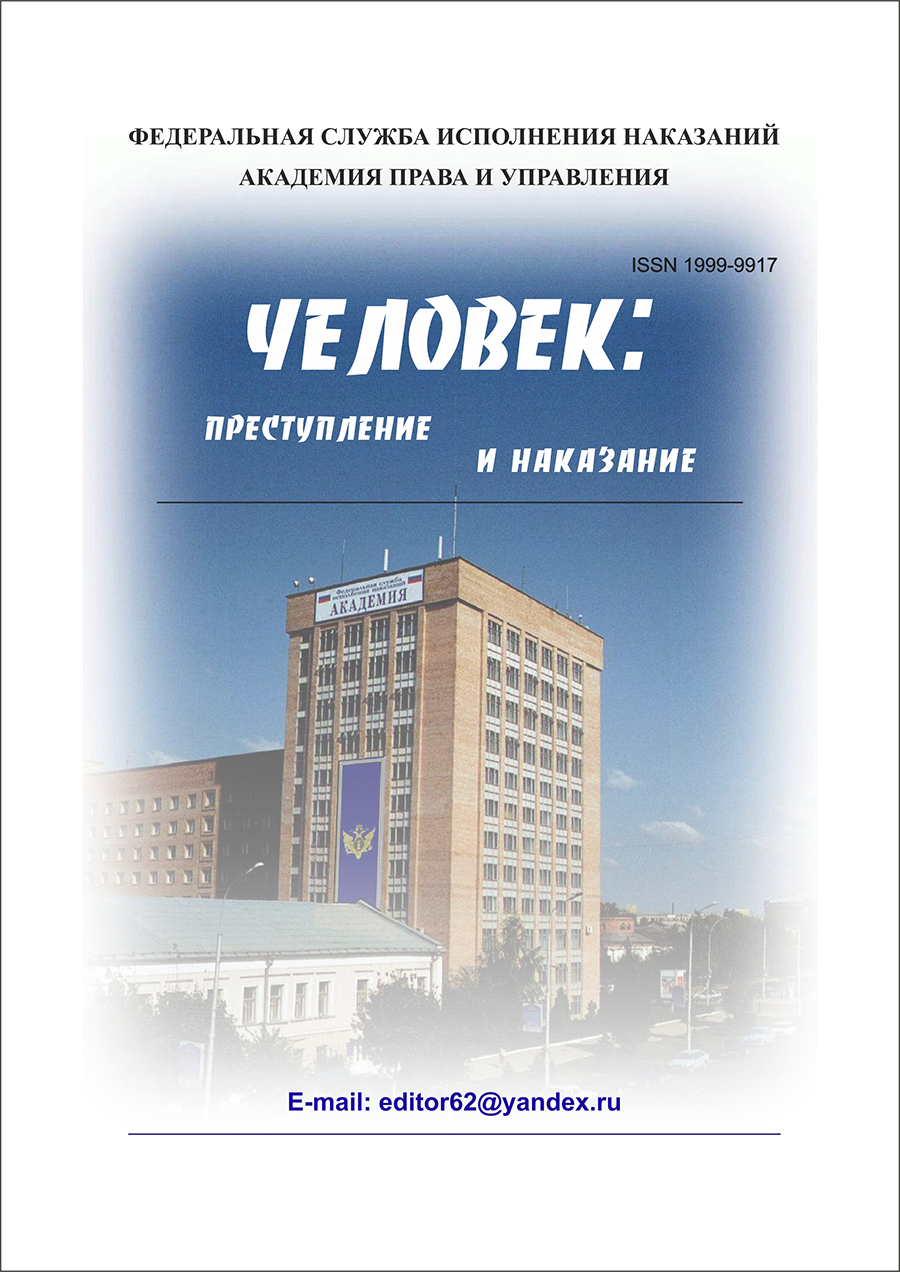Russian Federation
UDC 34
When forecasting recurrent (penitentiary) crime, various general cognitive methods are applied: logics, imagination, speculative thinking, hypothesizing, observation, comparison and analogy, experiments, etc. From the authors’ point of view, it is necessary to elaborate the methods of criminological forecasting that have been used in practice by the law enforcement agencies, primarily by the internal affairs bodies (police) and the correctional facilities who work hard on preventing recurrent (penitentiary) crime. These approaches can be conditionally divided into three groups: extrapolation, modeling and the method of expert estimates.Using the method of forecasting, it is necessary to take into account the completeness of information on recurrent crime and, in accordance with this, to predict its future state in general or the number of repeated crimes committed by the persons released from correctional facilities.In the broadest sense, the essence of the method of extrapolation consists in studying the history of the object predicted and in transferring the patterns of its development in the past and the present to the future. In other words, this method is intended for search of the future indicators given that tendencies of the past and the present will continue. By applying the method of extrapolation and some special mathematical calculations, it is possible to determine what recurrent (penitentiary) crime will look like in the coming years and months. Using this method, it is possible to predict the state of recurrent (penitentiary) crime for a specific term which shouldn’t exceed the past period studied (with the factors determining the develop- ment of recurrent (penitentiary) crime remaining invariable).When forecasting recurrent (penitentiary) crime in general, the whole set of methods, including that of modeling, should be used. The key elements of the future model of recurrent (penitentiary) crime are mainly expressed quantitatively. These are the number of crimes committed by recidivists as well as their specific weight in the total number of crimes committed, in separate groups, in the categories of offences, etc.When forecasting recurrent (penitentiary) crime, in addition to extrapolation and modeling, the method of expert esti-mates is applied - the experts’ opinions based on their professional knowledge and practical experience. For forecasting, the value of expertise lies in the fact that in estimating the events, a highly-qualified specialist relies not only on "official information", but on his own experience and intuition.Given that recurrent (penitentiary) crime is made up of separate offences committed by recidivists, individual forecasting is required. The individual forecast is always specific and valid for a particular person, under certain conditions, in a certain place, at a certain time, etc.
recurrent (penitentiary) crime, forecasting, methods of forecasting (extrapolation, modeling, method of expert estimates), individual forecasting
1. Avanesov, G. S. Kriminologiya [Tekst] : ucheb. dlya vuzov / G. S. Avanesov. - M. : YuNITI-DANA, 2006
2. Varchuk, T. V. Kriminologicheskoe prognozirovanie i planirovanie preduprezhdeniya prestupnosti [Tekst] : ucheb. posobie dlya vuzov / T. V. Varchuk ; pod red. S. Ya. Lebedeva, M. A. Kochubeya. - M. : YuNITI-DANA, 2007
3. Suprun, V. I. Sovremennaya burzhuaznaya futurologiya: problemy, tendencii [Tekst] / V. I. Suprun. - Novosibirsk : Nauka, 1986









